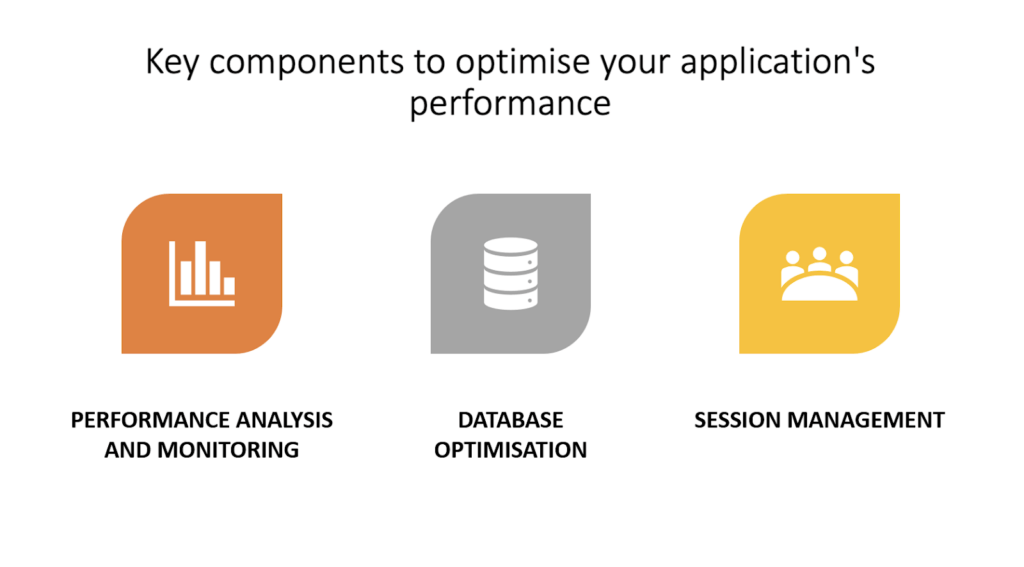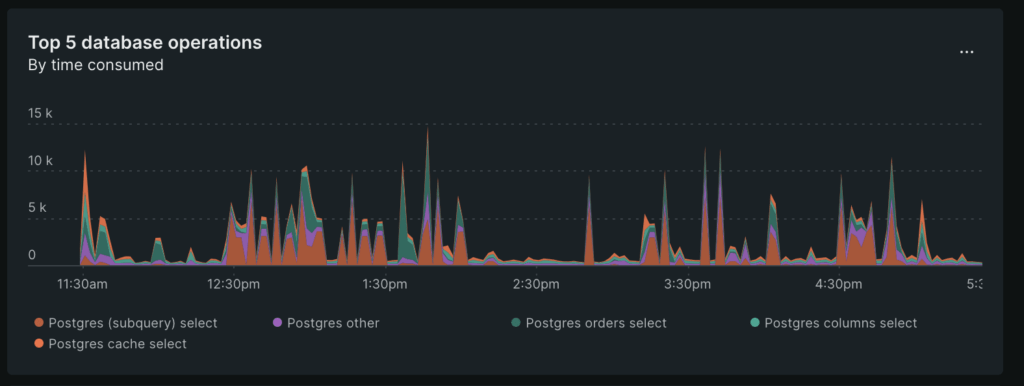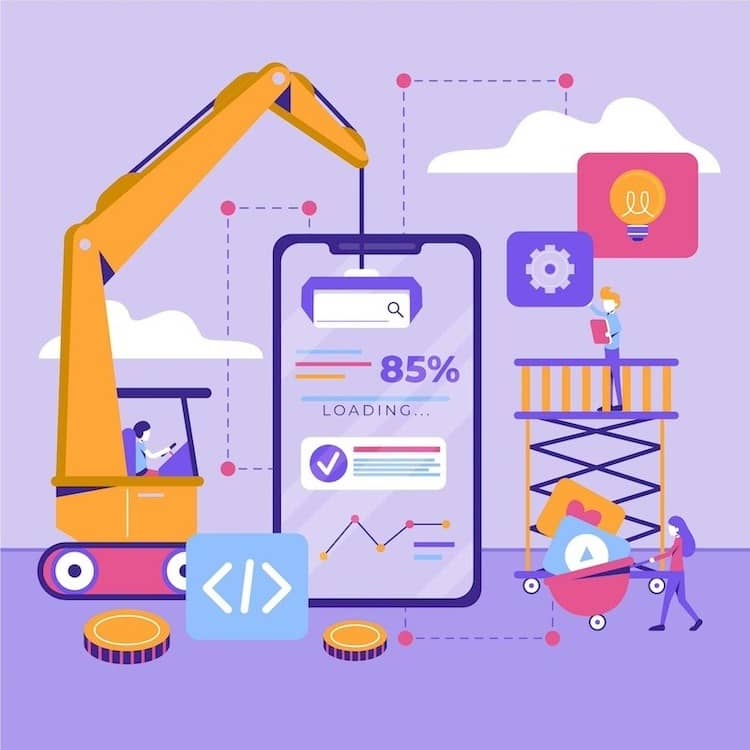Is your Laravel application frequently encountering performance-related challenges? Are you struggling to handle unpredictable user traffic, which leads to periods of downtime? Is your application overprovisioned with resources, causing a rise in your operational expenses?
If your response to the previous questions aligns with a “yes,” it’s a clear signal that the time has come to initiate the scaling process for your Laravel application.
We at Mallow have over a decade in the industry of custom software development, have successfully partnered with clients from various business domains. Our scalable solutions have not only earned us continued trust with our clients but have also played a pivotal role in building applications that are optimally scalable and cost-effective in terms of overall resource consumption, resulting in taking their business to the peak of success.
After going through this article, you will gain a comprehensive understanding of how to scale your Laravel applications effectively. This knowledge encompasses a deep insight into the scaling process itself, including the importance of each step and the underlying reasons behind their significance.
Steps to take to scale up your Laravel application
Application optimisation and management
This stage in the application development process focuses on fine-tuning and maintaining the application to ensure it performs at its best throughout its lifecycle, to identify bottlenecks and performance issues through monitoring and profiling tools. You need to implement optimisations, which may include code refactoring, database indexing, or server resource allocation adjustments, to address these issues and enhance overall performance. This stage encompasses ongoing monitoring and management of the application in a production environment. This involves tracking application metrics, analyzing user behavior, and addressing any emerging issues promptly.

-
- Performance analysis and monitoring
Before starting to scale your Laravel application, it’s imperative to conduct a thorough performance analysis and set up robust monitoring. Performance analysis involves identifying bottlenecks and areas that need improvement.

Utilise APM tools like New Relic to track performance metrics such as response time, database queries, and resource usage. Regularly review these metrics to spot anomalies and areas of concern. This data-driven approach lets you decide where to focus your optimisation efforts as you scale.
-
- Database optimisation
-
- Leverage insights gained from performance analysis and monitoring like most time-consuming queries and frequently called queries and improve them.
-
- Make use of built in performance monitoring options for finding slow query logs and full table scan queries and improve them. Also, you can make use of database services like RDS’s performance insights if you are using RDS.
-
- Examining the database schema and queries in your Laravel application
-
- Ensure appropriate indexing of columns frequently used in queries to enhance data retrieval speed.
-
- Consider normalising the database schema to reduce data redundancy and enhance data integrity, leading to efficient storage and query operations.
-
- Minimise unnecessary joins in SQL queries and implement caching mechanisms for improved performance.
-
- Select necessary columns instead of selecting all the columns
-
- Examining the database schema and queries in your Laravel application
-
- Session management:
Efficient session management is vital for both security and scalability in Laravel applications. By default, Laravel uses file-based sessions, but as your application scales, you might consider using alternative session drivers such as Redis. These drivers are more suitable for distributed environments and offer better performance. Also, consider using stateless authentication mechanisms like JWT (JSON Web Tokens) to reduce the burden on server-side session management.
Caching
During the caching stage of the application development process, you need to implement mechanisms to store and retrieve frequently used data or resources in a more efficient manner. Caching plays a pivotal role in enhancing application performance by reducing the need to repeatedly fetch or compute the same data, which can be resource-intensive and time-consuming. By storing data in a cache, the application can respond faster to user requests, minimise the load on backend systems, and improve overall user experience.
-
- Strategies for implementing caching
Laravel offers built-in support for caching, providing a simple way to cache data and retrieve it efficiently when needed.
Start by identifying areas in your application where caching can be most effective. This will allow you to store frequently accessed data, such as database query results or entire views, in a cache store like Redis. Implementing caching strategically can significantly improve your application’s performance.
-
- Content Delivery Network (CDN)
A Content Delivery Network (CDN) could be used to deliver static assets like images, style sheets, and scripts, which can significantly improve the performance of your Laravel application. CDNs consist of distributed servers strategically placed across various geographical locations. These servers cache and serve static content to users from the server closest to their location. By utilising a Content Delivery Network (CDN), you can offload static assets, reducing the load on your Laravel application and enhancing its overall performance.
To utilise a CDN effectively, first, select a reputable CDN provider that aligns with your needs and budget. Popular CDN providers include Cloudflare, Amazon CloudFront, and Akamai. Once you’ve chosen a CDN, integrate it with your Laravel application by pointing your assets to the CDN’s distribution network.
Horizontal Scaling
Horizontal scaling involves adding more server instances to your Laravel application to distribute the incoming load effectively. This approach is particularly valuable when your application experiences traffic spikes or needs to accommodate a growing user base.
Consider cloud service providers for your application like AWS, Azure etc, where you will be equipped with an extensive range of services for your application. These tools enable you to quickly deploy and manage multiple instances of your application across various servers.
-
- Queue system for background jobs
Implementing a queue system is vital for offloading time-consuming tasks as it helps in concurrent processing and improves the response time of your Laravel application. Laravel provides an integrated queue system using drivers such as Redis, Amazon SQS, or database-based queues. Check out this official documentation from Laravel about queues.
When scaling your application, it’s crucial to configure and optimise your queue workers to handle an increased load efficiently. Ensure your workers are distributed across multiple servers or containers for redundancy and optimal performance.
Imagine you have a video processing application where users can upload videos for various operations like transcoding, resizing, or adding watermarks. Processing these videos can be resource-intensive and time-consuming, potentially causing delays and poor user experience if done synchronously within the application. When a user uploads the video, you can directly move this job to the queue system so that it can perform asynchronously without spoiling the user experience and degrading your application’s performance.
For more details, about queue systems refer this article from Honeybadger on job queues and workers in Laravel applications.
-
- Load balancing & auto-scaling
Load balancing and auto-scaling are critical to ensuring your Laravel application can handle varying traffic levels effectively. Load balancing distributes incoming requests evenly across multiple application instances or servers, preventing any single server from becoming a bottleneck. This enhances your application’s availability.
Set up auto-scaling policies to automatically add or remove server instances based on traffic fluctuations. Auto-scaling ensures that your application can adapt to changing demand, reducing the risk of performance degradation during traffic spikes. Tools like AWS Auto Scaling or Azure Autoscale can simplify this process when deploying your Laravel application in cloud environments.
Imagine you have a taxi application. During the day, you experience heavy traffic as users book taxis online, but during the night, traffic decreases significantly. The load balancer detects the increased load and begins distributing incoming requests across a more significant number of application servers and provides increased availability.
The auto-scaling policies monitor various metrics, such as CPU utilisation, memory, or request latency. When the defined thresholds are exceeded (e.g., CPU usage reaches 80%), the auto-scaling system automatically triggers adding new application server instances. As more users access your website during the day, the auto-scaling system dynamically provisions additional application server instances to handle the increased load.
This ensures that response times remain low even during peak traffic. As nighttime approaches and traffic dwindles, the auto-scaling system scales down the number of application server instances to a minimum to reduce operational costs while maintaining adequate server capacity for any residual traffic.
-
- Database scaling
If your application is experiencing a high volume of read-heavy requests and relies on a single database, you may encounter significant performance bottlenecks. In many cases, a single database can struggle to handle concurrent read and write operations, leading to slow response times and potential service disruptions. To mitigate this, consider implementing database replication to distribute the read load efficiently. This will help you maintain optimal performance, even under heavy user demand.
Vertical Scaling
Vertical scaling involves upgrading your server resources, such as CPU, RAM, or storage capacity, to accommodate increased traffic and workloads. While it’s a straightforward approach, it has limitations, as there’s a ceiling to how much a single server can be scaled. To vertically scale your Laravel application, assess your current server’s performance bottlenecks and decide which resource needs expansion.
For example, you can increase RAM to improve data processing capabilities or upgrade the CPU for faster computation. Remember that vertical scaling may have limitations compared to horizontal scaling, which allows for more flexibility and scalability.
-
- Database scaling
As the amount of data stored and processed by applications grows, traditional database systems may become overwhelmed, resulting in slower response times and reduced overall performance. Vertical scaling involves increasing the capacity of a single database server to handle more data and traffic rather than distributing the load across multiple servers (horizontal scaling).
One key advantage of vertical scaling for databases is its simplicity. It allows application owners to upgrade their database server’s hardware, such as CPU, RAM, or storage, to accommodate increased demand. This, in certain cases, can turn out to be a cost-effective approach when the database system can handle the anticipated growth.
But it’s important to note that vertical scaling has its limits, and there may come a point where further vertical scaling becomes prohibitively expensive or technically challenging. In such cases, a combination of vertical and horizontal scaling strategies may be necessary to ensure optimal database performance and reliability. Properly understanding the database’s workload and performance bottlenecks is essential before deciding on vertical scaling, ensuring that resources are allocated effectively and efficiently.
-
- Increasing infrastructure utilisation
Vertical scaling in application development extends beyond just databases; it also encompasses the efficient utilisation of infrastructure resources across the entire application stack. This involves ensuring that all application components, including web servers, application servers, and databases, make the most of the available resources. When an application’s vertical scaling is done right, it leads to better resource utilisation and cost savings.
Your ultimate checklist as you move on to scale your Laravel application:
At this point, you possess a comprehensive understanding of the steps involved in scaling your application and how each task within these steps directly affects your application’s performance. This knowledge equips you to ensure that no critical aspects are overlooked during the scaling process. It enables you to approach the scaling of your Laravel application with increased efficiency, enhancing its overall performance and minimising the risk of missing crucial details.
Here is a list of crucial action items that will prove to be valuable as you commence the process of scaling your application. By following these action items, you can systematically address scalability challenges and ensure that your application can grow and adapt to meet the needs of your users.
✅ Implement a monitoring system (e.g., New Relic, Datadog, or ScoutAPM) to track application performance and server health. Set up alerts for critical metrics such as CPU usage, memory usage, and response times.
✅ Perform load testing using tools like Apache JMeter or Gatling to simulate high-traffic scenarios. Identify bottlenecks and performance issues in your application.
✅ Optimise database queries, indexes, and schema.
✅ Cache frequently accessed data and query results.
✅ Implement browser caching for faster page loads.
✅ Use workers for jobs with longer duration in your application. Following that, at frequent intervals, adjust worker processes based on your server resources.
✅ Profile your code to identify and optimise slow or resource-intensive sections.
✅ Implement database replication for read-heavy workloads.
✅ Consider database sharding for distributing data across multiple database instances.
✅ Offload static content to CDN.
✅ Continuously monitor and optimise costs associated with scaling, especially when using cloud services.
✅ Regularly review performance metrics and make necessary adjustments to maintain optimal scalability.
Still, unsure about from where you need to take your next step? Feel free to reach out to our team.
Your queries, our answers
Yes, we can continue developing your existing Laravel application. Please provide the current project details so we can assess and proceed. For more details, get in touch with our team.
No, we focus on custom Laravel solutions tailored specifically to your needs. We do not offer pre-built, off-the-shelf products.
Yes, we develop Laravel applications for various domains, including e-commerce, healthcare, finance, and more.
The cost varies based on the project's complexity and scope. For a basic MVP, costs generally range from $20,000 to $40,000 for web apps and $10,000 to $25,000 for mobile apps. For more advanced applications, costs can be higher. We offer a detailed cost breakdown tailored to your specific needs. To know more, check out our article on How much does it cost to work on a Laravel project with Mallow? and discover how we can build a strong partnership together.
The timeline depends on the project's complexity. A basic project may take a few weeks, while more complex applications could take several months.
Yes, we can align our working hours with your time zone to facilitate effective communication throughout the development process. For more details on how you can handle timezone differences efficiently, do check out our article on how to handle timezone differences while working with an offshore development team.
Mallow offers the following outsourcing models: Project-based outsourcing, Staff augmentation, & Dedicated development team (DDT)
Yes, we offer maintenance and support services to ensure your Laravel application remains up-to-date and functional.
Yes, you will own the intellectual property rights of your Laravel application upon project completion. Check out our article on why owning intellectual property rights while outsourcing your application is important.
The cost is influenced by several factors including the complexity of the project, the number of features required, and whether the application is for web or mobile. We provide a personalized estimate based on your project details.
We work with the latest stable versions of Laravel and can also support older versions if needed based on your project requirements. For more details check out our article on Laravel upgrade: when and how to transition to the latest version
Yes, we offer post-deployment support to address any issues and provide updates as needed.
To hire a Laravel developer from Mallow, you can contact us with your project requirements. We'll discuss your needs, suggest suitable developers or teams, and provide you with a proposal. Once the terms are agreed upon, we can start the development process.
Yes, you can hire a dedicated Laravel developer or a team of developers from Mallow. This allows you to have a dedicated resource working exclusively on your project, providing more control and flexibility over the development process.
To hire the right laravel developer for your project, check out this article on tips to hire the right Laravel developer.
Author
Anandhan
Anandhan is a passionate technical lead at Mallow, where he plays a crucial role in driving innovation and overseeing the development of cutting-edge solutions. With a wealth of experience in the field of technology, he consistently strives to elevate his team's performance and deliver exceptional results. His multifaceted interests inspire him to approach challenges with creativity and an open mind, leading to innovative solutions that transcend conventional boundaries. Beyond his professional endeavours, Anandhan nurtures a love for literature and cinema. During his free time, you'll often find him engrossed in the pages of books across various genres, exploring diverse narratives and gaining insights from authors around the world.



